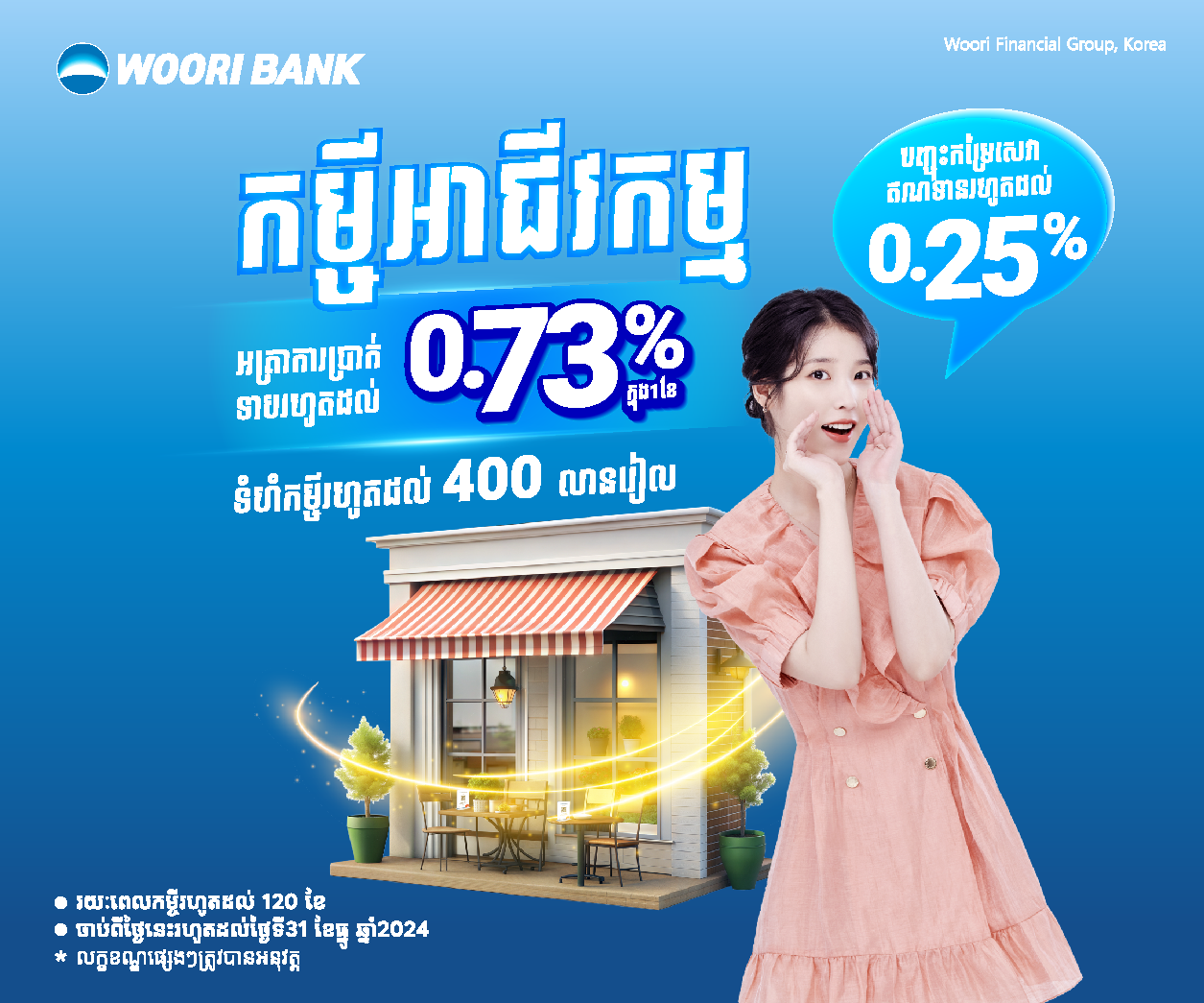
Sreyleak aims to promote sarong, a fabric that has played an important role in Cambodian identity for centuries. Photo supplied
Cambodian model, actress and singer Touch Sreyleak is sidelining the high-end brand clothing most celebrities wear and is breathing new life into an ancient Asian textile through her new line of clothing.
In April last year, the multi-talented celebrity (pictured, supplied) launched her line of sarong inspired clothing, accessories and household products, aiming to promote the fabric that has played an important role in Cambodian cultural identity for centuries.
Sreyleak’s love for the sarong was started by her family, with her mother and older female relatives all wear the textile for as long as she can remember.
“My family love wearing sarongs as daily wear. For me, even though I can’t wear it day-to-day, I still have the material wrapped around my head, like today. Look at my hair band; it’s my favourite. I love it from the bottom of my heart,” she tells The Post.
“I had the idea to make sarongs fashionable again after I saw everyone around me using it for so many interesting purposes. My grandmother and my mother like wearing sarongs as skirts a lot. They also wrap their upper body in it and use it during baths. It has long been part of our ancestor’s lifestyles.”
According to anthropological studies, the sarong was first worn by Cambodian women during the five-centuries long Funan era, which ended in 550AD. Upper-class women would wear bright coloured sarongs adorned with luxurious gold belts, while poorer women would wear plain coloured, dark sarongs.
Chuon Nath, Cambodia’s Supreme Patriarch between 1948 and 1969, is the most celebrated linguist in the Kingdom’s history for his efforts to preserve the Khmer language in the form of a dictionary.
In this dictionary Nath described the sarong as a woven fabric featuring colourful vivid patterns that show checks, brocades, flowers, vines and animals. He adds that sarongs can be for women and men, with historically men’s sarongs generally being locally made and worn indoors, while women’s sarongs are generally imported and worn outdoors.
Today, the Khmer sarong looks largely similar to those worn in Laos, Thailand and Indonesia.
But according to Sreyleak, Khmer sarongs can be differentiated by their fabric, which is usually comparatively soft and thin. Khmer sarongs mostly come in yellow, red, blue and rose, while the floral print is always small in scale unlike sarongs from other countries.
In Cambodia today, the sarong’s use is mostly restricted to middle-aged and older women in rural areas, with it rare to see young women wearing sarongs in the city as it is considered old fashioned.

But to revive the sarong’s popularity, Sreyleak has decided to give this ancient fashion a modern, cutting-edge re-design through her fashion line.
To this end, she has used the sarong design to create mermaid dresses, beach dresses, multi-layered dresses, jumpsuits, flowing skirts and blouses.
Sreyleak has also designed accessories and household products in the form of a hair band, a bow, cushion covers, tablecloths, table runners and placemats.
“To me the sarong is like a piece of art. It’s not just an indoor wear; it can be made into a fashionable dress that can be worn to parties and other functions,” says Sreyleak, who is also mother to a five-year-old son.
“Each sarong has a unique bright colour and floral pattern prints. It’s already beautiful as it is and you don’t need to add anything to it.”
While Sreyleak has enjoyed a successful show business career to date, the bubbly and friendly singer says she is keen to diversify her work through this fashion line.
“Having only one source of income is not enough for a local star like me. We local celebrities are different from Hollywood stars that can live in a complete luxury for their whole life after making a hit song. Some Khmer stars can’t earn enough to make ends meet. If we are careless with money, we even cannot afford to pay our bills,” she explains.
Sreyleak orders the fabric from Phnom Penh’s Oreussey Market, before her team treats and tailors it to her designs.
Prices for her dresses start from $80, while her more casual daily wear starts at $40. Accessories and household products start from $3.
“I’m very excited and proud wherever I go wearing this sarong dress. I look completely different from other people; it just looks different and beautiful in its own way,” she says.
“What makes me most proud is I am able to revive an ancient fabric and make it fashionable again.”
Sreyleak currently only sells her products online, allowing her to sell to Khmer expatriate communities in the US, France and Australia.
In the near future, she also plans to open small clothes shops in Phnom Penh and Siem Reap.
The singer confidently says she believes her famously stylish edge will be enough to bring this old fashioned item of clothing back into the mainstream.
“I’m an artist and I can utilise my fame to spread our culture. I’ll continue to wear it for 50 or 60 years. I’ll be more than happy when people call me Miss Sarong instead of Sreyleak.”
Sreyleak can be contact via her Facebook page (@Jenny Outver).















